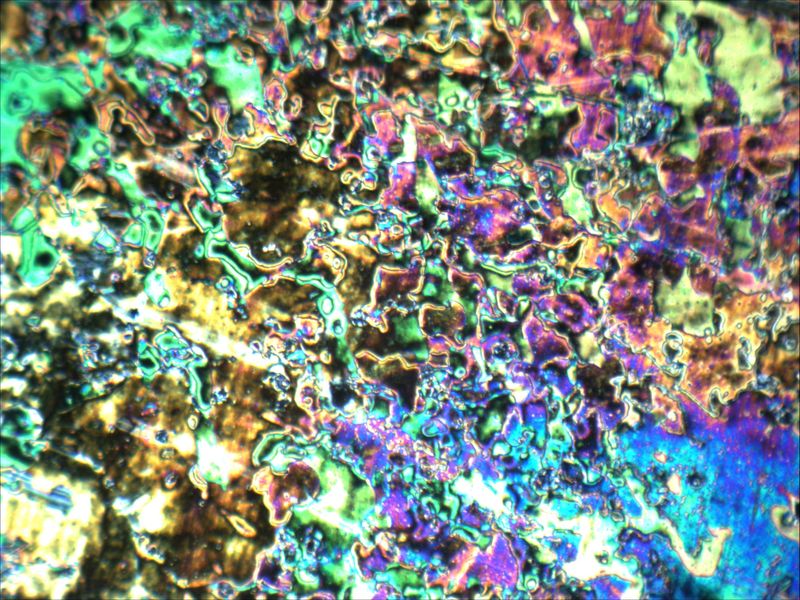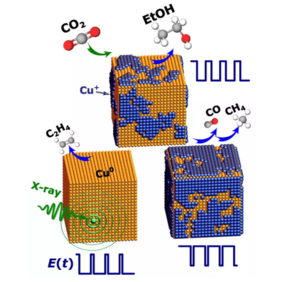Steering the structure and selectivity of CO2 electroreduction catalysts by potential pulses
Janis Timoshenko, Arno Bergmann, Clara Rettenmaier, Antonia Herzog, Rosa M. Arán-Ais, Hyo Sang Jeon, Felix. T. Haase, Uta Hejral, Philipp Grosse, Stefanie Kühl, Earl M. Davis, Jing Tian, Olaf Magnussen and Beariz Roldán Cuenya
One of the greatest political and social challenges of our time is the energy transition. To successfully shape the energy transition and achieve CO2 neutrality in society, technologies must be developed by which the greenhouse gas CO2 can be efficiently converted into valuable chemicals and fuels. The electrochemical CO2 reduction reaction (CO2RR) can fulfil this task: It is cost-effective and environmentally friendly when powered by renewable energy and supported by CO2 catalysts.
However, the question of how the reaction products can be controlled and managed has remained open until now. A research team involving the UniSysCat group of Beatriz Roldán Cuenya from the FHI Berlin and researchers from the Christian Albrechts University in Kiel have now found that this is possible by applying periodic electrical voltage pulses.
The practical application of CO2RR is hindered by several factors: the range of possible reaction products is broad and the correlations to the different catalyst properties, especially during the reaction, are poorly understood. The research team has now extensively explored the properties of the electrocatalyst under reaction conditions and shown that the structure of the catalyst can be controlled as needed by dynamic reaction conditions. With this idea, they were able to systematically investigate the relationship between the catalyst structure and the catalytic properties and develop a recipe for controlling the selectivity with respect to specific chemicals.
The systems studied are catalysts derived from Cu2O nanocubes. The researchers have shown that the critical parameters affecting the properties and function of the catalysts can be conveniently adjusted: For example, the oxidation state of copper and the structure of the Cu2O nanocube formed can be controlled by an appropriate choice of the applied voltage and the length of the voltage pulse. An important achievement of this study is the favourable production of ethanol due to the obtained dynamic equilibrium between oxidised and reduced copper species. This allows a dramatic increase in the CO2 selectivity of ethanol compared to static CO2RR conditions.
Furthermore, some interesting results were obtained by a synergistic combination of X-ray absorption spectroscopy, X-ray diffraction and X-ray photoelectron spectroscopy. The time-resolved experiments enabled the researchers to directly observe the periodic changes in the copper oxidation state and thereby discover the formation of a distorted oxide structure that is regenerated after each voltage pulse. These concrete changes in the chemical and geometric structure of the catalyst can explain improved selectivity trends, in which a metallic copper surface favours ethylene production, while Cu2O mainly promotes methane and CO. However, the simultaneous presence of the distorted copper oxide as well as metallic copper facilitates ethanol production.
The study demonstrates the enormous potential of pulsed electrolysis to control and optimise catalyst performance and highlights the importance of operando studies - a focus of the research group of Beatriz Roldán Cuenya - in understanding a new generation of catalysts.
The findings of Timoshenko et al. have been published in Nature Catalysis: Janis Timoshenko et al., Nature Catalysis 2022, 5, 259–267, https://doi.org/10.1038/s41929-022-00760-z
The text is adapted from the article "Selectivity of Catalysts" on the FHI website.



